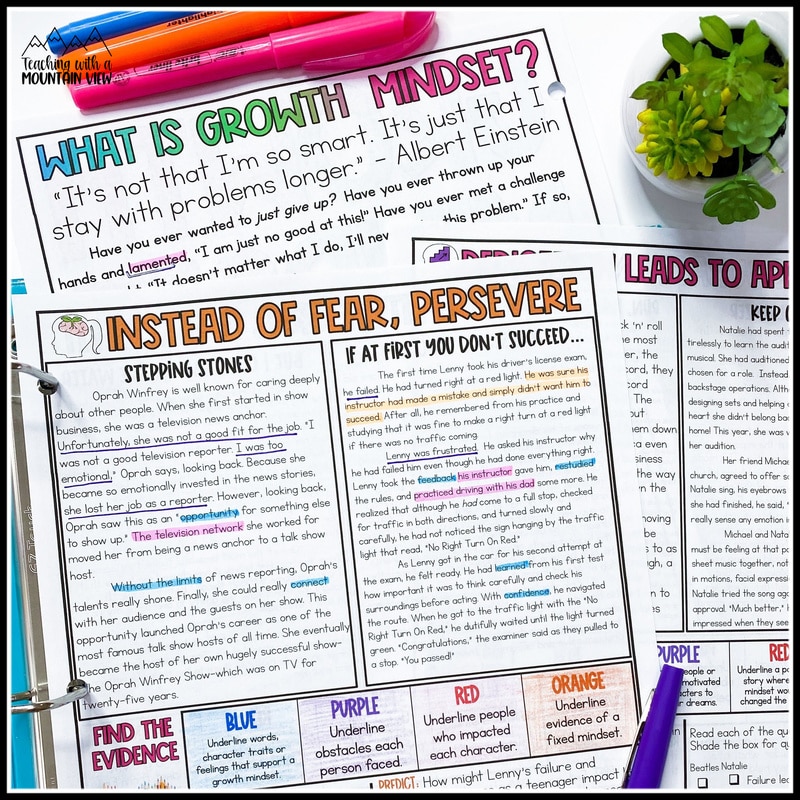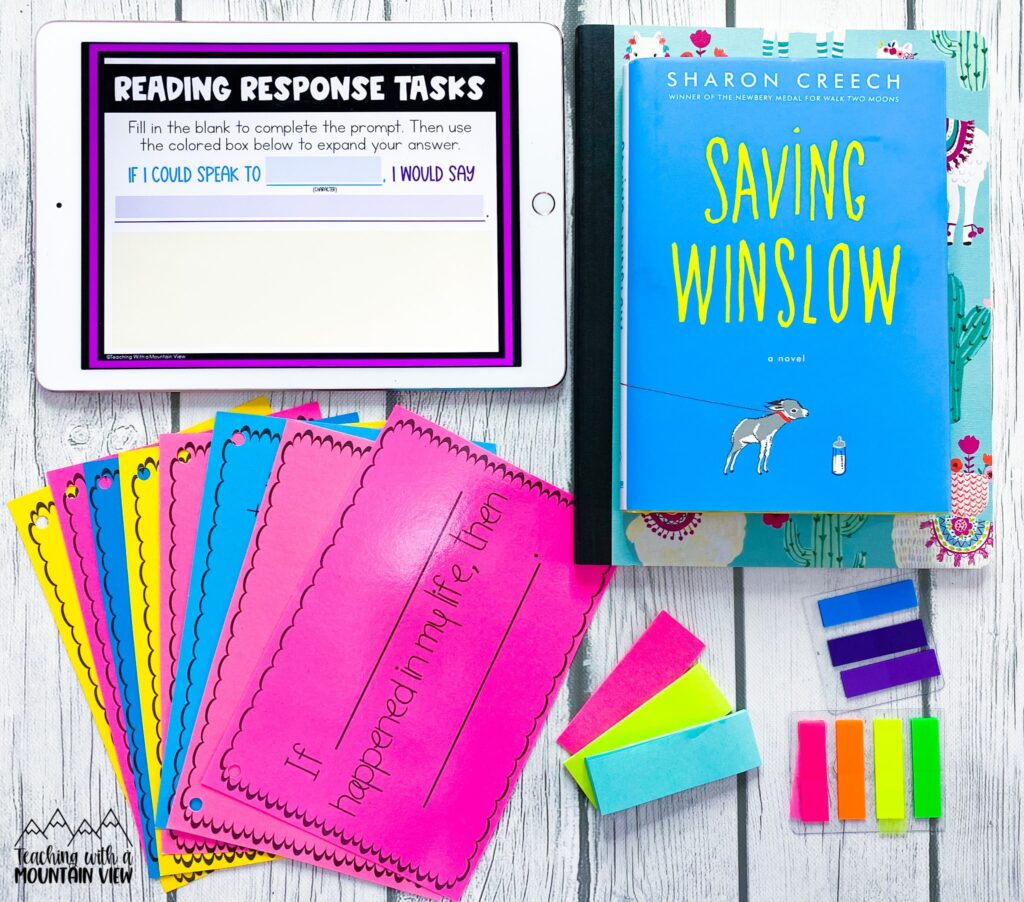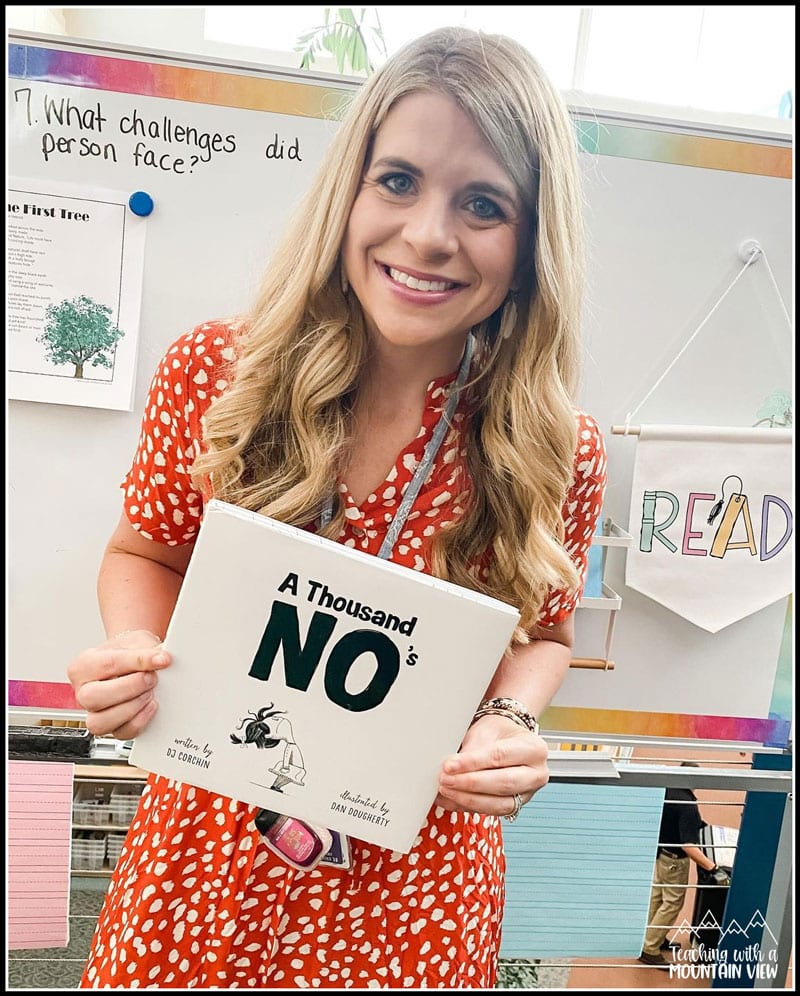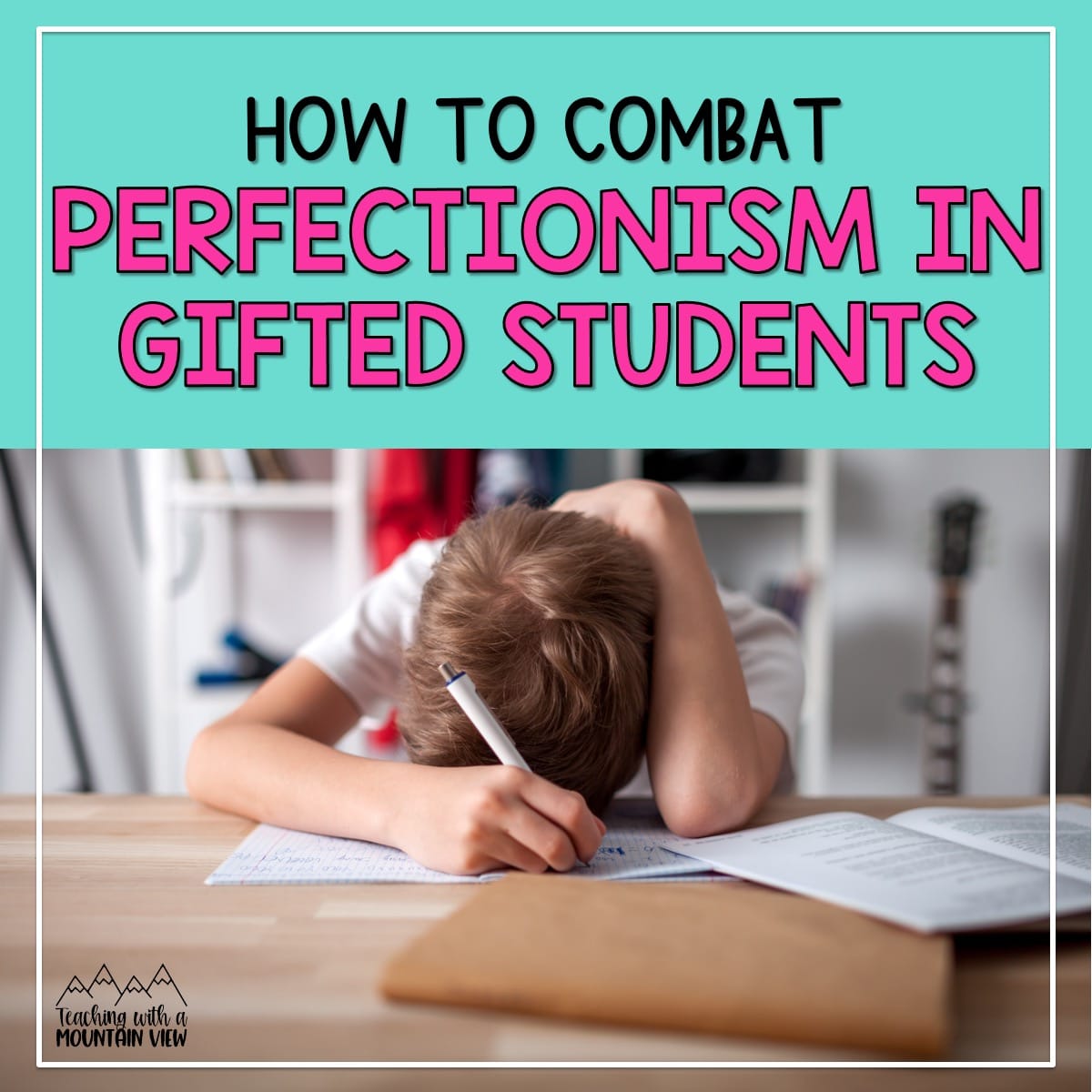
One of my passions is gifted education, and one thing I often find in my position is that there are A LOT of misconceptions about gifted students. One of those is that “they’ll be fine” and need very little intervention. However, a major part of my job as a gifted facilitator is to meet their unique social and emotional needs. One topic I find myself grappling with over and over again is perfectionism. Many truly gifted students experience some level of perfectionism, even from a very young age. Here are several ways you can provide support and combat perfectionism in gifted students.
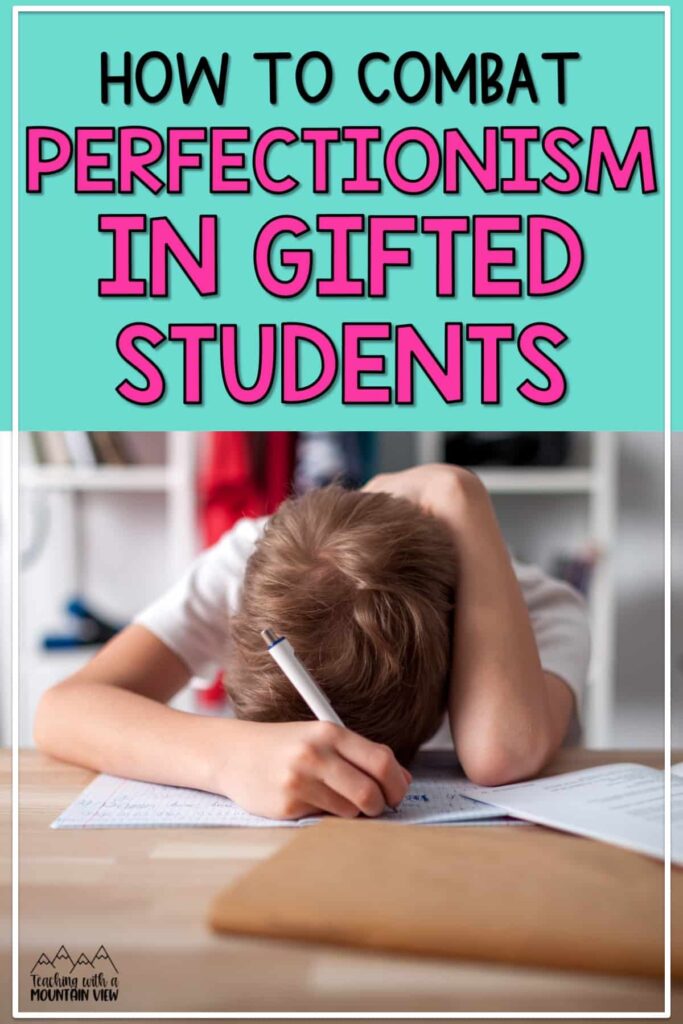
What does perfectionism look like in gifted students?
When you have a student struggling with perfectionism, there are a few signs you might see. First, you might notice that a student will only work alone. Working alone isn’t inherently a sign of perfectionism, but if this choice is made because a student is struggling to give up control during an assignment, it might be. For this student, letting others take over and help is a challenge because they feel no one can do the assignment like they do. Sometimes, I’ll see kids who always want to work along for fear of making mistakes in front of their peers.
Gifted students battling perfectionism may also turn in assignments late or not at all. In this case, they might feel that their work is never good enough, and so they work painfully slow, constantly redo parts of the assignment, or grow frustrated by their lack of “perfect” work.
Another sign of perfectionism in gifted students is avoiding certain tasks. You may actually see some behavior result from this, such as getting upset, angry, or causing disruptions. Students will oftentimes end up avoiding the work because they don’t feel 100% confident they can do it perfectly, so they don’t want to try.
How can you help students overcome their perfectionism?
The good news is that you can help combat perfectionism in gifted students.
I start by addressing perfectionism on day one in my classroom. You can do this by creating a classroom culture that accepts mistakes and alleviates the pressure to be perfect. A lot of this comes from modeling. For example, if you make a mistake, admit to it and verbally acknowledge it by saying, “Whoops! I made a mistake, but that’s okay.” And correct it without any fuss. I find myself modeling this a bit more than I’d like to admit! 😉
White I’ll happily admit to my mistakes, I am also proactive about this by studying the brain and growth mindset as our very first unit of the year. We learn all about how synapses work, how you learn from mistakes (and don’t really grow all that much from getting something right the first time), and read about a TON of different people who have had to persevere through less than perfect situations and came out on top.
I use this Growth Mindset Paired Passage resource with ten inspiring stories in the form of five paired passages. These stories are about people who have faced challenges and overcome obstacles. There are also annotation opportunities and written responses for students to flex their reading skills.
I selected several of my favorite growth mindset quotes, added some thoughtful reflection questions, and a couple of biographies about famous people who have a growth mindset to create this FREE activity.
You can also model this when you react to students making mistakes. For example, if a student gives a wrong error or makes a mistake, acknowledge the mistake and let it go. You might say, “Oops! That’s not quite right, but it’s okay. Let’s try again.” When they see that you are willing to accept mistakes and move on, they don’t feel pressured to be perfect!
In the past, I have had students covertly make fun of other students (and sometimes even me!) for making mistakes. They might giggle or scoff under their breath, and this is a major no-go for me. There are a lot of little things I ignore in my classroom (we’ve all heard that saying… it’s not necessary to react to everything you notice…), but this isn’t one them. This is a great opportunity to help students build empathy… we acknowledge that we all make mistakes. How do we want to be treated when we do?
You can also promote a classroom culture of effort over product. We strive for excellence in academics, but we talk a lot about what that means and looks like – students are often surprised to hear it doesn’t mean straight As and perfect scores. It means academic growth, self-confidence and reflection, responsibility, etc.
Address head-on that in your classroom, practice does not make perfect. Practice makes progress. Emphasize that making mistakes is essential to learning. I have students often ask, “Is this for a grade?” or rush to my table asking, “What grade would I make on this?” So, I often emphasize that it’s not about a grade… it’s about the journey of learning (which is not what our students are used to hearing)!
Activities to Help Combat Perfectionism in Gifted Students
Along with creating a classroom culture that accepts mistakes, you can also help students overcome perfectionism with some of the activities below. These activities are meant to continue the modeling process, but also challenge students to step outside their comfort zone and feel inspired by others.
#1 Activities with more than one “right” answer.
I have many students who obsess about finding the right answer. They are accustomed to multiple choice answers that they can deduce the right answer from or writing their teacher’s perfect answer. We can push our students out of this comfort zone by creating questions that have multiple answers.
These types of questions tend to be higher level thinking questions, so not only are you combating perfectionism in gifted students, but you are also challenging their knowledge. For math, I highly recommend going to Open Middle or Nrich for critical thinking problems. For literacy, consider more open-ended questions about texts. You can learn more and download these FREE reading response cards in this post.
#2 Reading about the trials of others.
During morning meetings, independent reading, or whole group reading, use novels and stories about people who have faced trials. These stories should address their trials or mistakes and how they overcame it.
There are many stories of famous inventors, scientists, athletes, and beyond who have made mistakes – and still ended up successful. In fact, I do an entire unit on inventors and analayze the difficulties they faced and what came as a result!
If you aren’t sure where to start with your book list, this post has book recommendations and activities for developing this type of growth mindset.
Hands-down, my FAVORITE book for developing a Growth Mindset is called A Thousands Nos. Spoiler alert, but the main character takes dozens upon dozens of Nos and turns them all into a great big, beautiful YES! It stands out as one of my favorite books of all time for gifted students.
#3 Role play scenarios in the classroom.
Whether you’re teaching classroom expectations at the beginning of the year or reviewing mid-year, using role play in the classroom is a great way to practice accepting mistakes. It’s almost like creating muscle memory!
You can do this as a whole class by having students act out different situations, like struggling with an assignment or getting a grade they didn’t like on a test.
You can also practice one on one with students. For example, sometimes a student will get really upset and frustrated. I give them some time to calm down, and then I say, “Hey, can I show you how you can ask for help next time, so you don’t get so frustrated?” And we act it out together. It may seem silly (and you might get an eyeroll or two), but it helps model emotional regulation and coping with perfectionism.
Giving sentence stems to students who are struggling is also a proven strategy for helping students handle some of these issues.
#5 Friendly Competitions
Oftentimes, gifted students have experienced a lack of true challenge in their academic career, so when something becomes challenging, that can be difficult to face. One way I address this is by participating in some national competitions like Wordmasters for literacy and Continenal Math League for math. These are hard competitions, and they can compete among other gifted students throughout the country. This is hugely motivating for them! Now, since these can be rather difficult, we emphasize GROWTH and the experience and perseverance gained from participating in the activities over the number of answers they get correct. The students get SO amped up about these addition sto our classroom, and I truly believe it helps them experience productive challenge to combat perfectionism.
Combating perfectionism in gifted students won’t happen overnight, but consistently modeling and implementing strategies like this helps! As a struggling perfectionist myself, I know it won’t “go away”, but we can teach our students to fight against the narrative in our heads and accept that we are all imperfect beings.
For more strategies and activities to use with gifted students, visit these gifted education blog posts.
Mary Montero
I’m so glad you are here. I’m a current gifted and talented teacher in a small town in Colorado, and I’ve been in education since 2009. My passion (other than my family and cookies) is for making teachers’ lives easier and classrooms more engaging.







